
Two clusters of massive stars that may be in the early stages of merging. NASA, ESA & E. Sabbi (ESA/STScI)
How can a universe that seems so cold, dark, and sterile become a place where life can flourish? This is one of the questions that the astronomer Dr Jennifer Wiseman asked in her seminar at the Faraday Institute last month. In her talk, part of which I have summarised here in my own words, she explained why the cosmos can be seen as a very fruitful place – and why this idea is compatible with her own sense of purpose for the world.
Jennifer grew up on a farm in Arkansas, where she came to know the stars in a way that those of us who have lived in light-polluted cities all our lives could never appreciate. She went away to university to study physics, discovered a comet as part of a summer research project, and went on to do research in astronomy. As someone who studies star formation, she has been able to see first-hand why the conditions were so perfect for life to develop on earth – and possibly other places as well.
The tools available to astronomers today are light-years away from the ones available to Galileo. High above the atmosphere, space telescopes like Hubble have transformed our understanding of the universe. Other types of telescope receive radiation beyond the visible spectrum, enabling us to see through the clouds of gas and dust that surround newborn stars. The instruments in today’s telescopes and space probes can give information in much finer detail – capturing images in high definition. They can also detect which wavelengths of light are being emitted, so astronomers can predict which molecules might be present in different stars and planets.
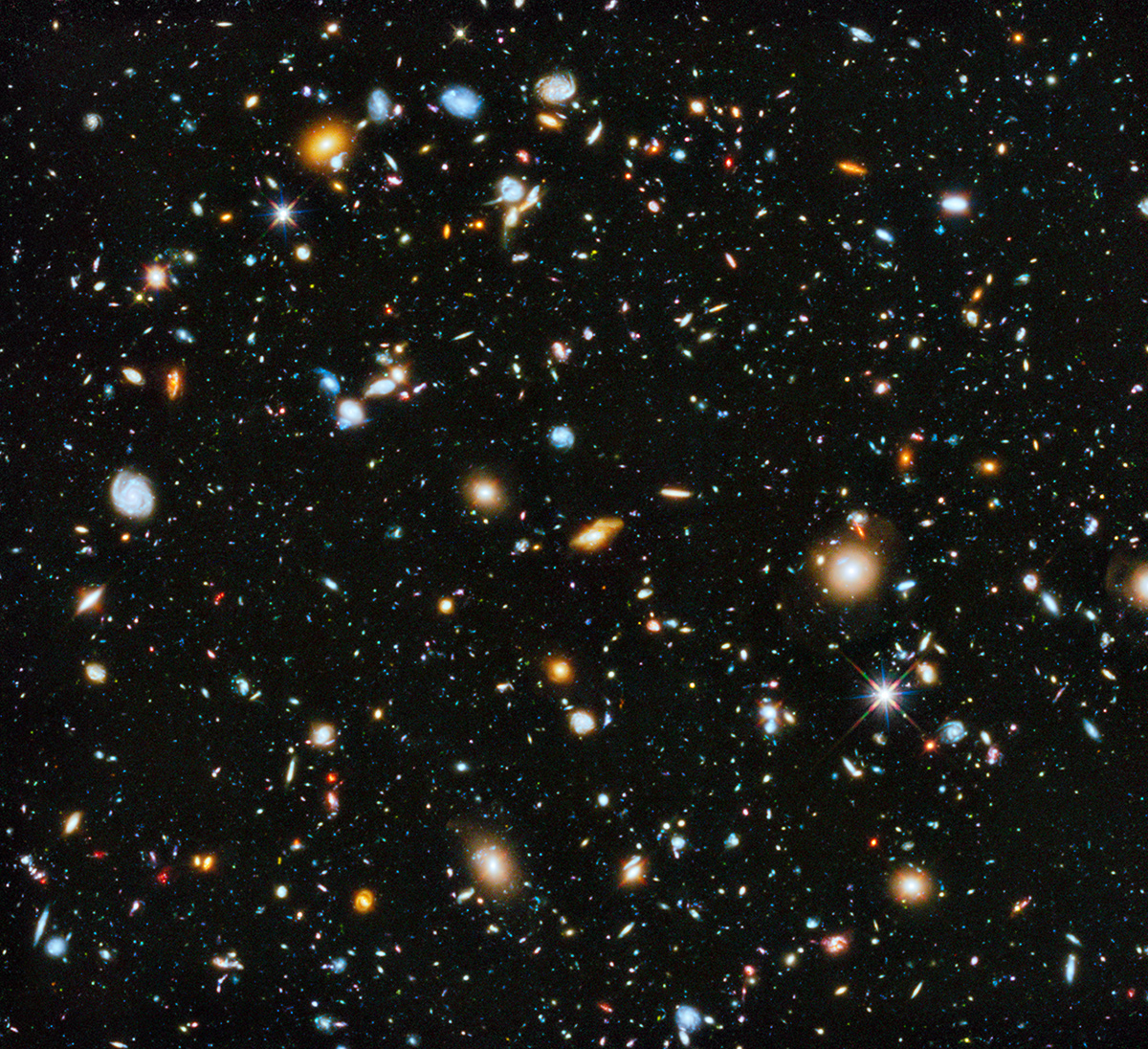
NASA, ESA, H. Teplitz and M. Rafelski (IPAC/Caltech), A. Koekemoer (STScI), R. Windhorst (Arizona State University), and Z. Levay (STScI)
After its 2009 refit, the Hubble telescope has been revealing the secrets of the night sky in unprecedented detail. One study involved capturing light from a relatively dark area, using an exposure of several days, to see whether it was possible to detect galaxies we had not seen before. The result of this ‘ultra deep field’ experiment is stunning.
Light travels at a constant speed, so the further away an object is in the night sky, the older its image is by the time it reaches your eye. So if you observe a star fifty light years away, the light you receive from it will be fifty years old. It’s an incredible thought, but the Hubble telescope has enabled scientists to capture images of galaxies more than 13 billion light years away. So given that the big bang is thought to have happened 13.8 billion years ago (give or take 0.021 billion years), these pictures of very far away galaxies show us what they looked like when they were newly formed.
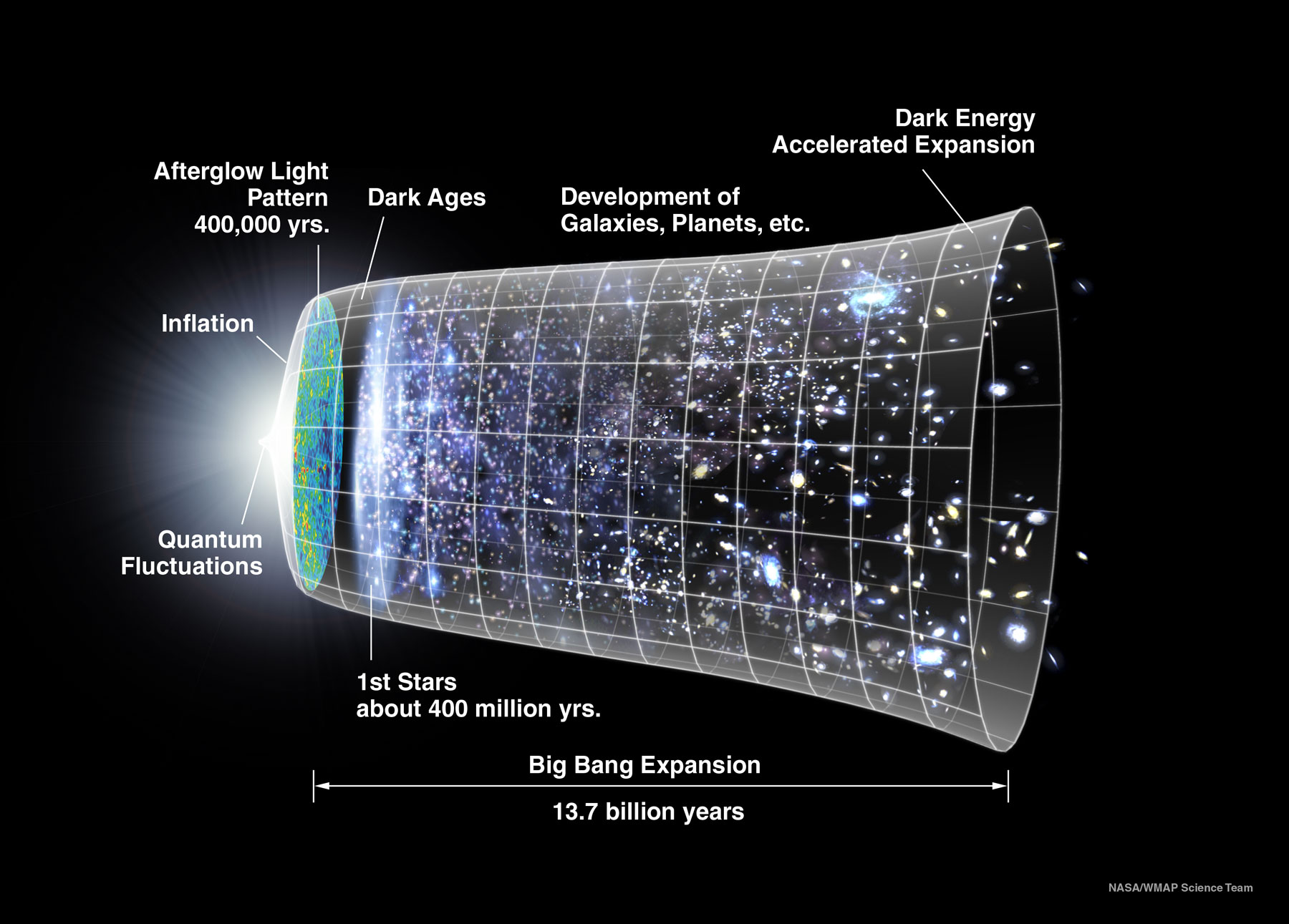
NASA WMAP
By comparing images of galaxies at a range of distances from earth, astronomers can then see how they have changed over time. The stars in the earliest galaxies were fairly simple, made mostly of very compressed hydrogen. Inside their hot dense cores the atoms of hydrogen were fused together to produce helium, releasing a huge amount of light. When the hydrogen was mostly used up, the forces inside those stars changed and they exploded.
The energy from these dying stars fused helium atoms together to produce other kinds of elements, and other elements were produced from those elements, and so on. All these different types of atoms were released into interstellar space, and the next generation of stars formed out of this cloud of dust and gas. The new stars contained more than just hydrogen and helium, so they were able to produce yet more new kinds of chemical elements. Over time, most of the elements in the periodic table were produced in this way.
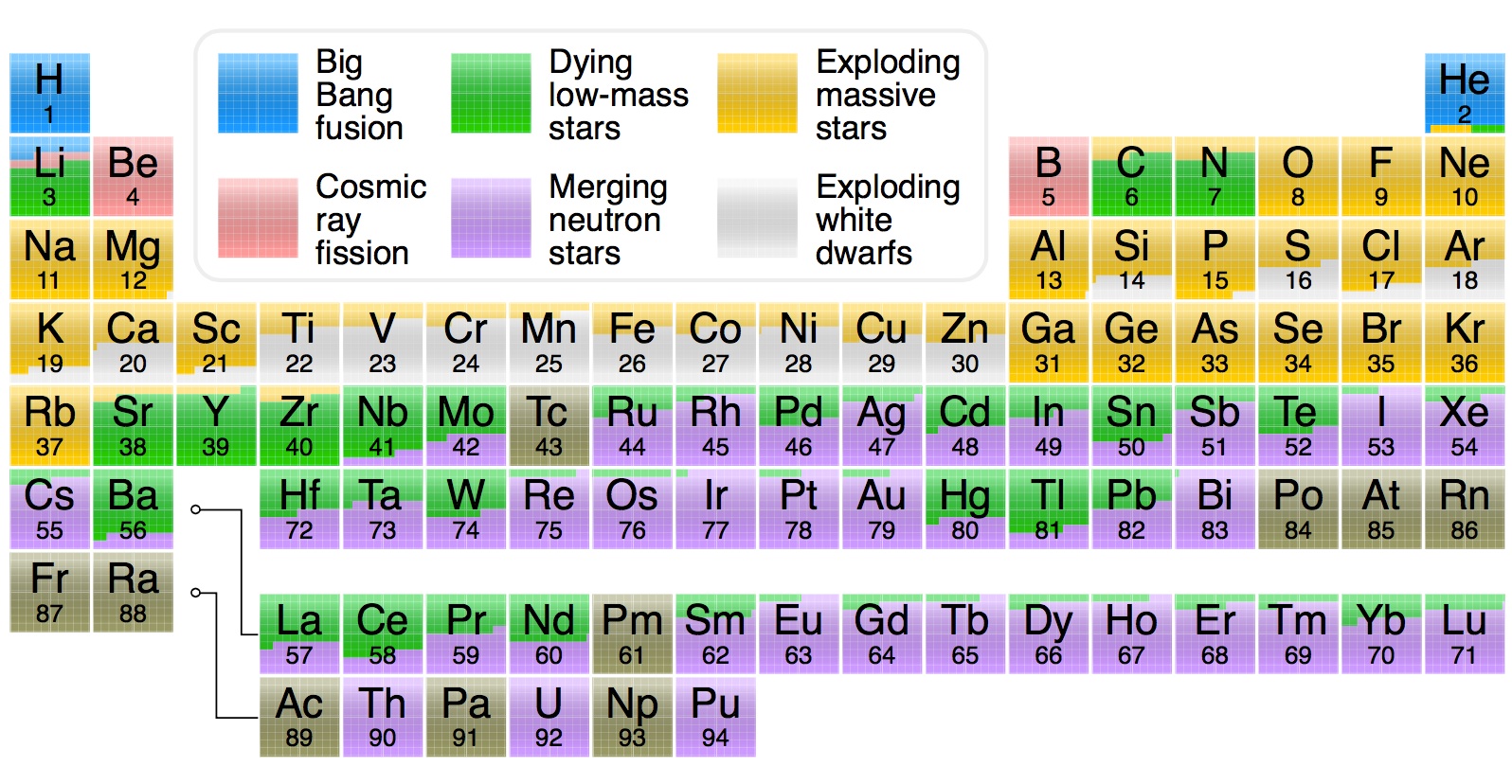
By Cmglee, Creative Commons Attribution-Share Alike 3.0 Unported license
Zooming in on a region like the Orion nebula, dark dusty regions are visible orbiting around the newly forming stars. These discs of debris are the birthplace of planets. Data like these have shown astronomers that stars and their planets are born not one after the other, but at the same time, and the dusty discs are a hot topic for research at the moment.
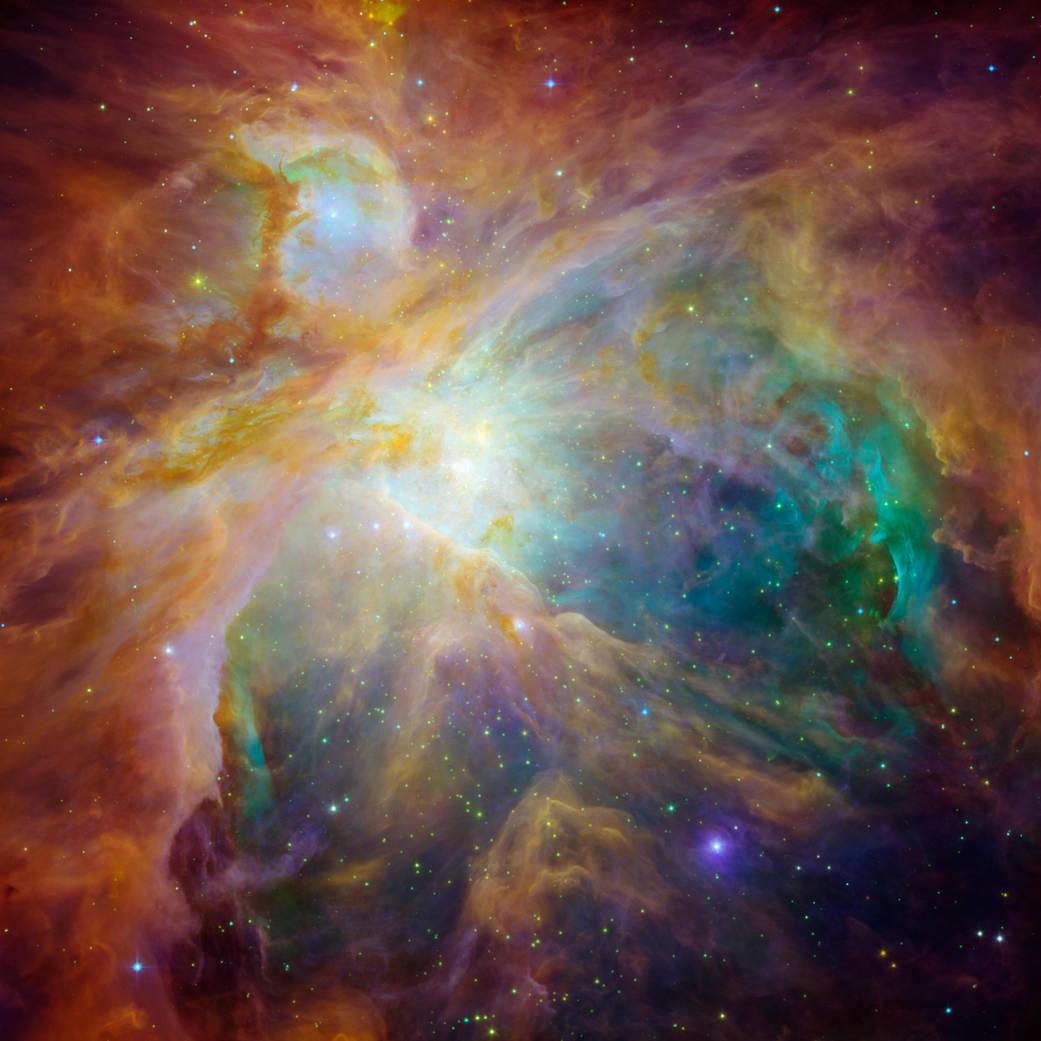
NASA/JPL-Caltech/STScI
Our own galaxy was formed by several generations of massive stars, each one seeding heavier chemical elements into the next generation. Many of the rings that form around the new stars – our own solar system included – contain the elements needed for life.
So if the universe has matured over time, providing the conditions for life to thrive and flourish so abundantly on at least one planet – does that mean that there is a purpose to the universe? Was the cosmos meant, somehow, to produce life?
We’ve just jumped from the science to a philosophical question, but that leap is not obvious to everyone. Many people – scientists included – often intermingle science and philosophy, letting each seed the other with questions and ideas. The discussion of philosophy or faith in light of scientific discovery is helpful, if we are aware of what we are doing, and the different kinds of questions that each quest pursues. If we want to make scientific claims, we need to be aware of which questions science is and isn’t capable of answering by itself.
The physicist Freeman Dyson once said somewhat enigmatically, “It would not be surprising if it should turn out that the origin and destiny of the energy in the universe cannot be completely understood in isolation from the phenomena of life and consciousness… It is conceivable…that life may have a larger role to play than we have imagined. Life may have succeeded against all odds in moulding the universe to its purposes. And the design of the inanimate universe may not be as detached from the potentialities of life and intelligence as scientists of the twentieth century have tended to suppose.” For Jennifer, the fruitfulness of the universe for life makes perfect sense in the light of the existence of God.
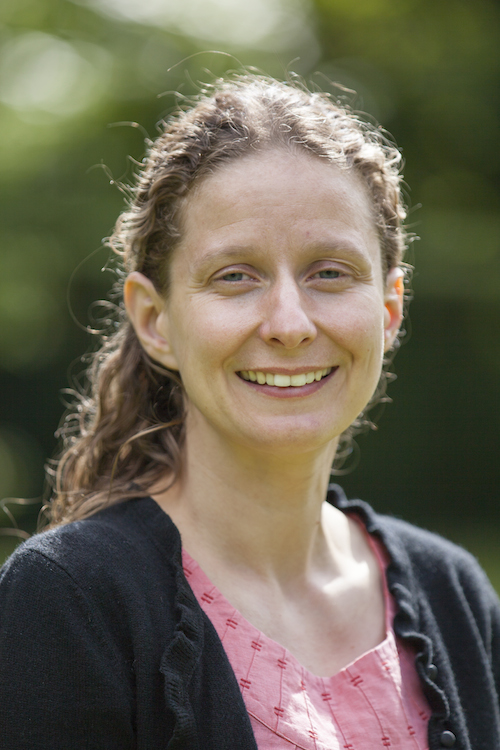
© Faraday Institute
Ruth Bancewicz is a Senior Research Associate at The Faraday Institute for Science and Religion, where she works on the positive interaction between science and faith. After studying Genetics at Aberdeen University, she completed a PhD at Edinburgh University. She spent two years as a part-time postdoctoral researcher at the Wellcome Trust Centre for Cell Biology at Edinburgh University, while also working as the Development Officer for Christians in Science. Ruth arrived at The Faraday Institute in 2006, and is currently a trustee of Christians in Science.




